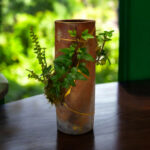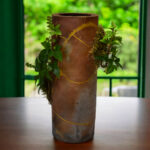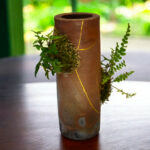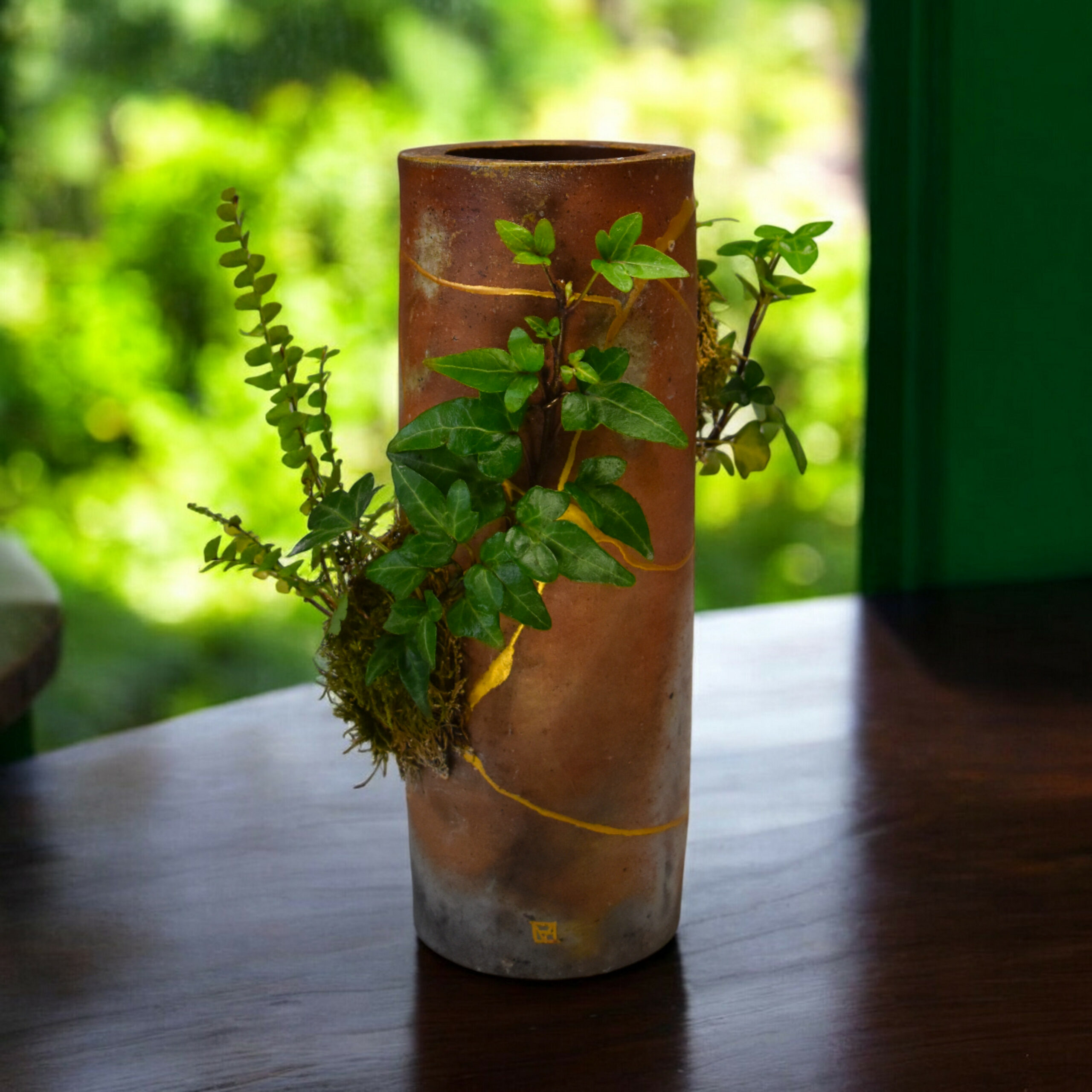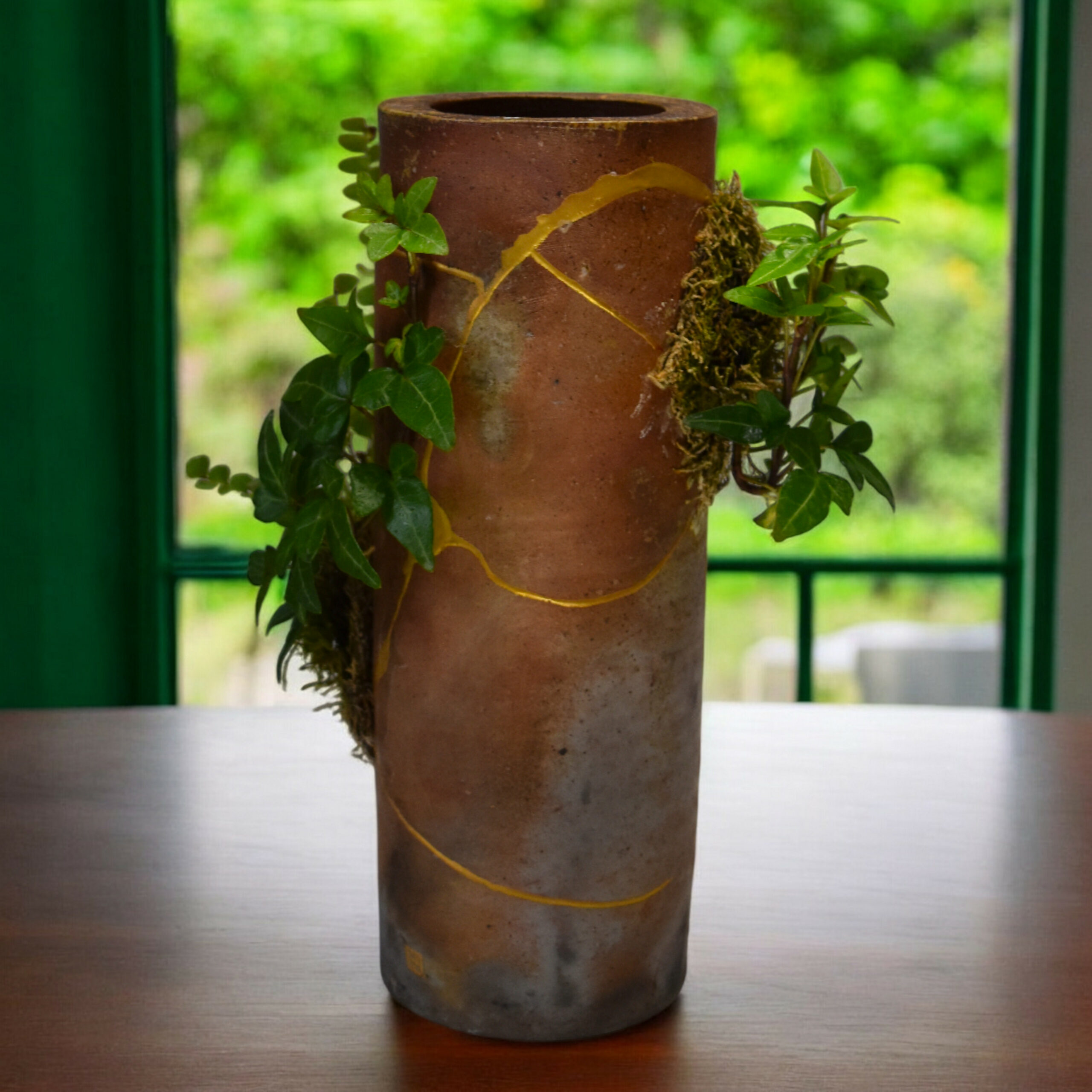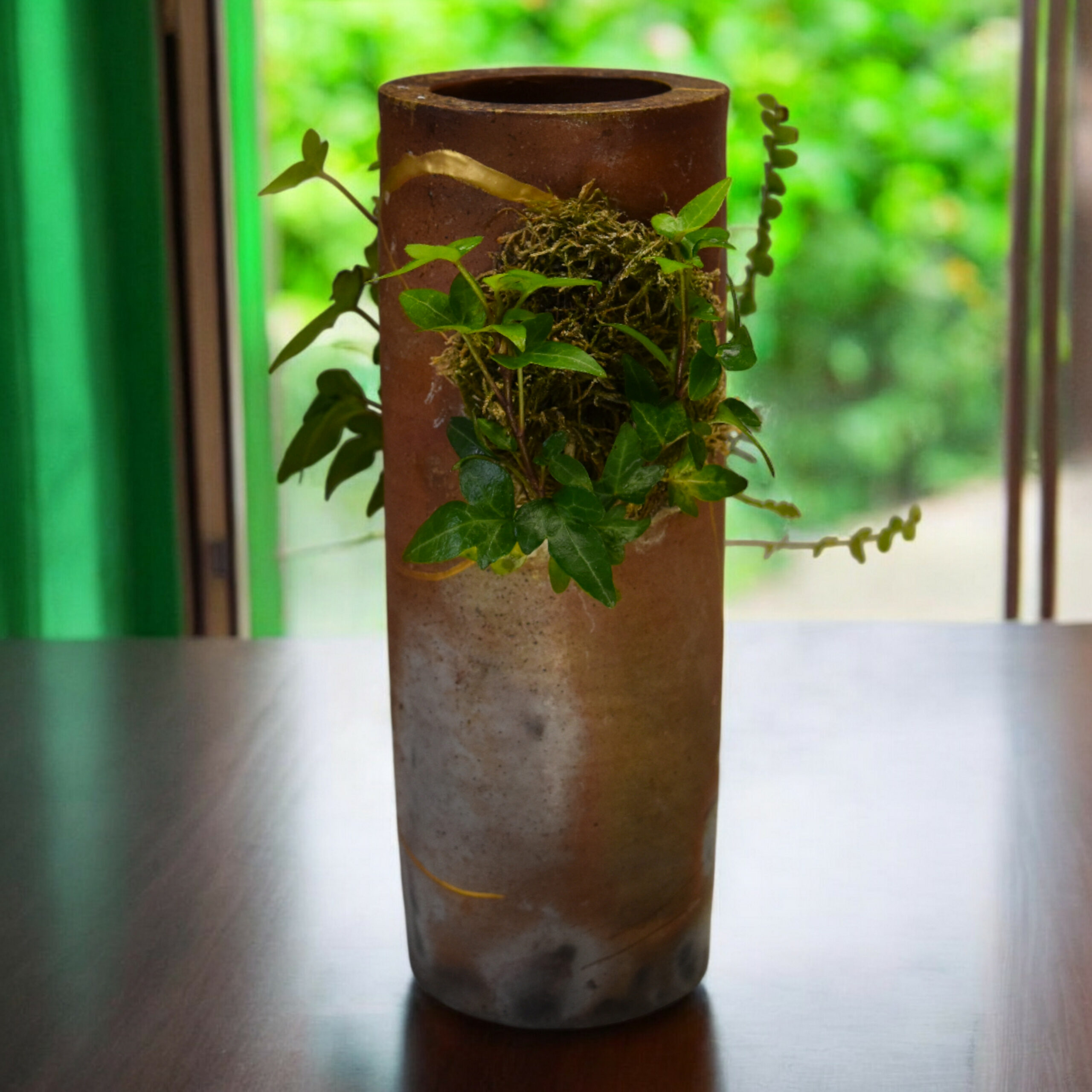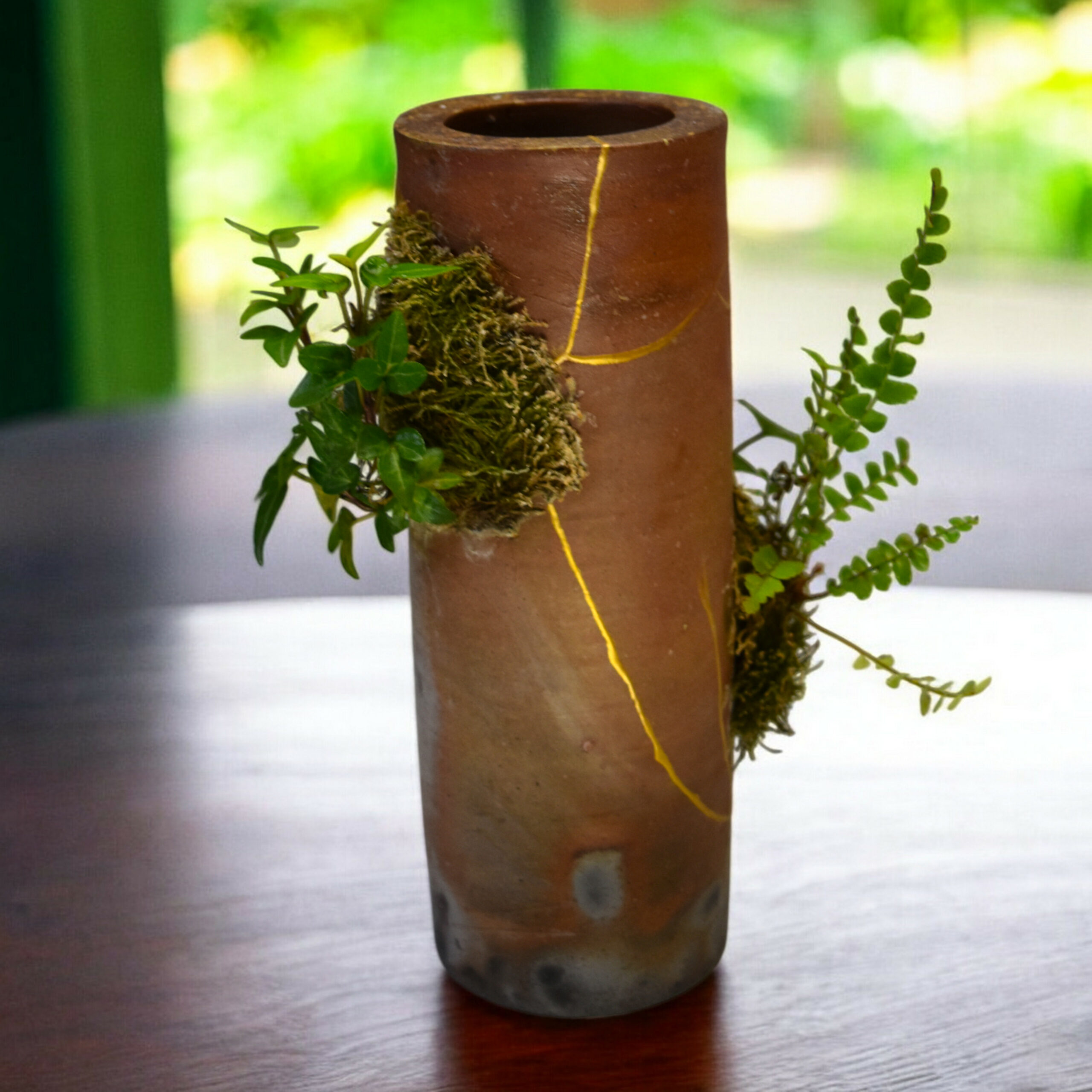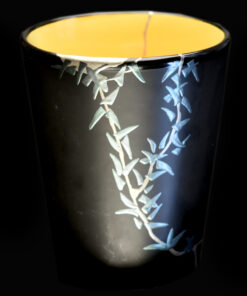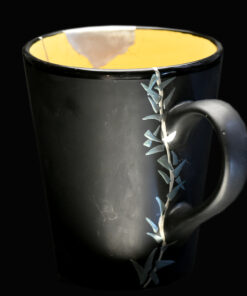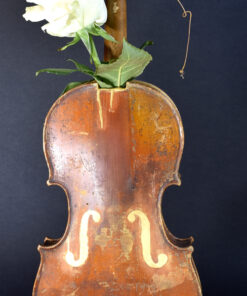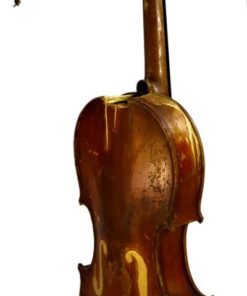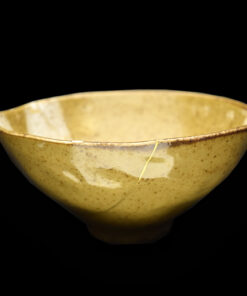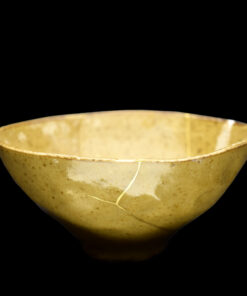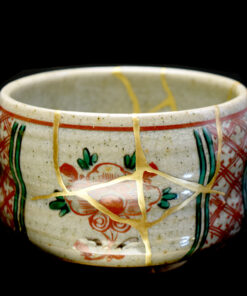Exceptionnal vase with kintsugi and living plants
3 000 € VAT excl.
In stock
For express shipping please contact us before purchase as prices are difficult to calculate automatically on the website.
Our blue planet, plagued by climate upheaval, reminds us of the vital importance of water. SAXIFRAGE (meaning Stone-breaker) is a Bizen stoneware vase (Japan), 20 cm high, restored and vegetated, an ode to this precious resource. By combining the fragility of ceramics, the strength of nature, and the precision of artistic gesture, I wish to raise public awareness of the challenges of water preservation. This vase is a metaphor for our world, where the scars of the past can be transformed into sources of renewal.
PRESENTATION:
The vase has a roll shape, evoking the organic forms of nature. The Bizen stoneware bears traces of the firing, offering a surface that contrasts with the brilliance of gold. The cracks repaired with kintsugi create a delicate network of golden lines that run across the surface of the vase. Green moss, a fern, and ivy, add a touch of life and color to the whole. The association of materials as varied as ceramics, gold, moss, and plants creates a rich and complex composition.
Kintsugi, a Japanese technique for repairing ceramics with lacquer and gold, celebrates the beauty of imperfections. In this work, the golden cracks are not only repairs but become decorative elements that highlight the object’s history. They symbolize resilience, transformation, and the beauty born of fragility.
Ceramics are an inert material par excellence. Here, they are associated with life through the integration of plants. They represent stability, permanence, but also fragility in the face of shocks and time.
Plants, symbols of life and growth, contrast with the inert nature of ceramics. They bring a temporal dimension to the work, reminding us that life continues even in the most hostile environments.
Water, although not visible, is omnipresent. The vase is filled with it, serving as a reservoir of life for the plants. It is what nourishes the plants, what enabled the creation of the ceramics, and what may have caused the cracks repaired with kintsugi. Water here is a symbol of life, transformation, and cycle.
INTERPRETATION:
It is a powerful metaphor for life and nature. It invites us to celebrate the beauty of imperfections, to recognize the strength that resides in fragility, and to marvel at the capacity of life to adapt and thrive in the most difficult environments. The vase, an inanimate object, is transformed into a miniature ecosystem, a microcosm where life flourishes.
The association of kintsugi and living plants creates a dialogue between art and nature, between the past and the present. This work is an invitation to contemplation, to meditation on the passage of time and on our place in the world.
RESILIENCE AS A GUIDING THREAD:
The resilience of plants: Plants that grow in rock crevices, par excellence, symbolize resilience. They embody the ability of life to flourish in the most difficult conditions, to transform adversity into an opportunity for growth. In this work, they represent the strength of nature to regenerate and adapt.
The resilience of repaired ceramics: Kintsugi, the art of repairing broken ceramics with gold, is a powerful metaphor for resilience. The cracks, far from being signs of weakness, become decorative elements that add to the beauty of the object. They testify to a history, a journey, and remind us that trials can make us stronger.
The resilience of humans in the face of environmental challenges: Humans, like ceramics and plants, are capable of facing challenges and rebuilding. We can draw on the resilience of nature to find the resources necessary to face environmental issues.
HARMONY BETWEEN HUMANS AND NATURE:
Interdependence between humans and nature: The work highlights the deep interconnection between humans and their environment. Plants, which depend on ceramics to survive, just as ceramics depend on plants to come to life, symbolize this symbiotic relationship.
The importance of preserving biodiversity: By showcasing living plants, I draw attention to biodiversity and its importance for the balance of ecosystems. This work is a call to preserve this diversity, which is essential for our survival.
Art as a vehicle for awareness: Art has the power to raise awareness and spark reflection. Through its beauty and simplicity, this work invites the viewer to question their relationship with nature and to become aware of the importance of preserving it.
CONCLUSION:
SAXIFRAGE, through the alliance of Bizen ceramics, kintsugi, and living plants, is an invitation to celebrate the beauty of life in all its forms. It reminds us that fragility and resilience are two sides of the same coin. By showing us how art can repair what is broken and give a second life to matter, I invite the viewer to look to the future with optimism. More than just an object, it is a metaphor for our world, a call to harmony between humans and nature.
| Certificate of Authenticity | Provided |
|---|---|
| Color | Brown |
| Materials | 24 carats Gold, Living plants, Urushi (Japanese lacquer) |
Related products
Masterpieces
Traditional Japanese Kintsugi
Traditional Japanese Kintsugi

